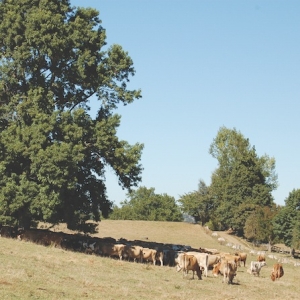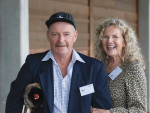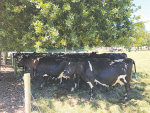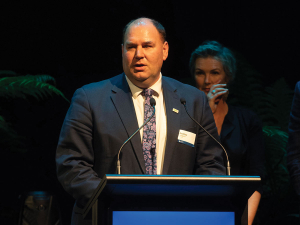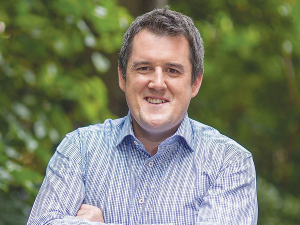Heat stress is a big issue dairies must address during the hot weather.
When cows are exposed to hot weather, they have a limited ability to store up heat in their body and then allow it to dissipate overnight. In times of extreme temperature, or high humidity, the ability of a cow to regulate her body temperature can be overwhelmed. An even bigger problem is during a run of days and nights of high temperature and humidity causing the heat load of the cow to rise and rise.
The key measure is the temperature and humidity index (THI). There are good tools that use tables of THI and weather forecasts to identify days or weeks of high risk of heat stress. Dairy Australia has resources for predicting and managing heat stress, and I encourage all dairy farmers to access these resources, to set up the alerts that warn in advance of times of high risk. The cool cows website is a must for favourites at this time of year.
During times of heat stress there are various strategies that can be employed. Some are simple management decisions like changing the time of milking to avoid the heat of the day, thoroughly wetting the yards prior to bringing the cows in for milking or selecting paddocks close to the dairy with good shade.
Active cooling can include using sprinklers during milking to cool the cows. Research suggests that getting the correct droplet size can make a big difference to the effectiveness of sprinkler systems, and in addition to sprinklers, using fans to enhance the effectiveness of evaporation can also improve cooling efficiency. As the air blows over the wet skin it increases the rate of evaporation. As the water evaporates it literally sucks heat out of the cow. This is known as the latent heat of vapourisation and is a useful ally in the fight against heat stress.
Passive cooling under shade structures or trees are also great methods of mitigating heat load. A nurseryman once told me that the best time to plant a tree is 20 years ago and the next best time is today. A well-designed and maintained tree line is an asset to any farm. Ensure the correct orientation for your tree line so that you don’t shade your laneways during the winter which can result in wet slippery surfaces.
Shade structures can range from shadecloth to freestall barns. Every farmer setting out to build a shade structure will need to do a feasibility study. Orientation is important to maximise the effectiveness of the shade pattern and minimise the shading of areas of high traffic. Dairy Australia has great publications on this topic.
If your prevention strategies fail and you are faced with a cow (or cows) collapsed with heat stress/heat stroke, it is a serious emergency.
Often the cow will go down with milk fever like symptoms, their respiration will become fast and they will be open-mouth panting and often will froth at the mouth. Actively cooling these cows before any other treatment is important; lots of cool water poured over the cow to soak her to the skin and then encouraging the water to evaporate by fanning is useful.
The aim is to get their body temperature below 39.2oC. I have seen cows with temperatures over 42oC survive once cooled and treated. Some cows will need calcium, anti-inflammatories and oral or IV fluids depending on their symptoms. Take care when treating cows with heat stroke. I have had them literally drop dead off the needle while being treated when I hadn’t ensured that they were adequately cooled prior to treating.
Far more common than seeing clinically affected cows is to see evidence of sub-clinical heat stress. Milk drop, reproductive failure and other production losses are the most common and most costly part of heat stress but are often largely invisible. This is why every dairy farmer should plan to ameliorate the risk of heat related losses; heat stress will be costing you a small fortune long before you see clinically affected animals.
• Rob Bonanno is a former president of the Australian Cattle Veterinarians Association and a director of the Shepparton Vet Clinic, Victoria, Australia.





